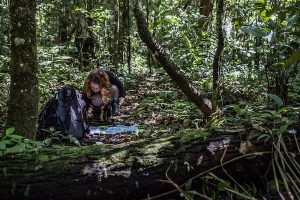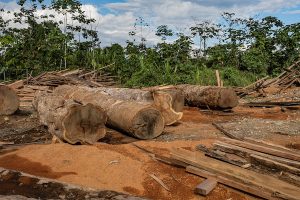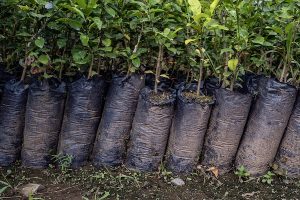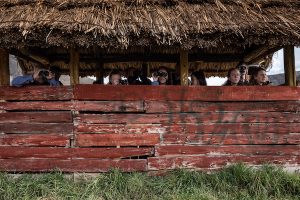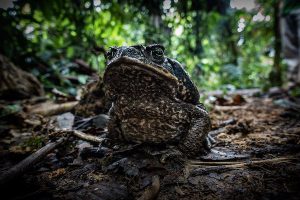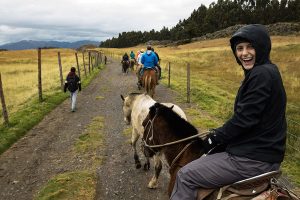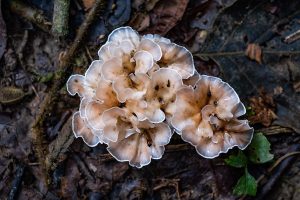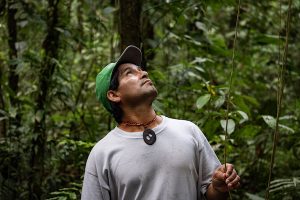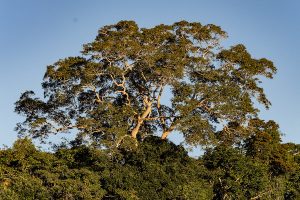"You need a new story.
You should come with me to Peru this summer.
I’ll take you to the Amazon."
That was my introduction to biology professor Miles Silman in early 2013. And while we didn’t know it at the time, that was the first step toward a unique and immersive study-abroad experience we would develop and lead together in the Peruvian Amazon starting in 2017: Tropical Ecology and Science Writing.
After a two-year COVID-19 break, we gathered a great group of students and headed back into the Amazon in late May this year for the fourth time.
The elements of our program? Earth’s richest biological diversity along its greatest gradients in temperature and rainfall. The pristine Amazon and Andes, under threat by climate change. Cascading environmental dangers spreading around the world. An urgent need to understand the science and communicate the message to general audiences.
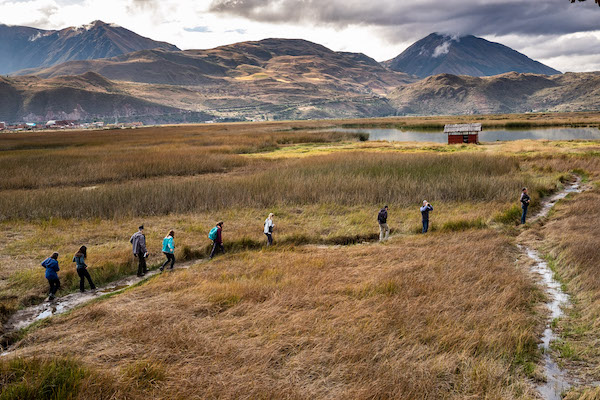
Here’s how we got there: Biologist and journalist. Expert and novice. Having finished three decades as a reporter and editor covering local issues, I was indeed in need of a new story to complement my teaching role. So, I traveled with Silman in summer 2013 to Peru, where he has spent 30 years studying how tropical forests work, why they harbor much of the world’s biodiversity and how the world depends on the ecosystems services they provide. (Silman is the Andrew Sabin Family Foundation Presidential Chair in Conservation Biology and was founding director of the Wake Forest Center for Energy, Environment and Sustainability.)
It was a steep learning curve, one I welcomed, one Silman helped me climb. I recognized there is no more important story on Earth than the accelerating climate crisis, especially in warm places such as the tropics where so much life is affected. I would come to understand as well that scientists aren’t always good at communicating their knowledge. Yet good journalism can make important scientific concepts broadly understood.
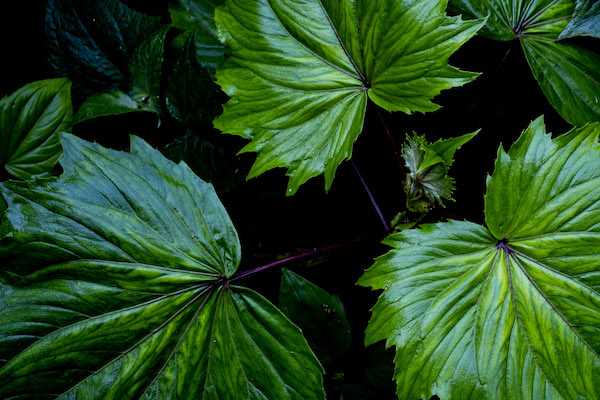
After a few years embracing this new story as a freelance correspondent covering climate change and climate policy internationally, I began talking with Silman about combining our twin passions — tropical ecology and journalism — into a study-abroad experience like few others.
What follows is how our program works. It is one way Wake Forest enables its faculty and encourages its students to venture into the wild with the goal of making a difference in the world.
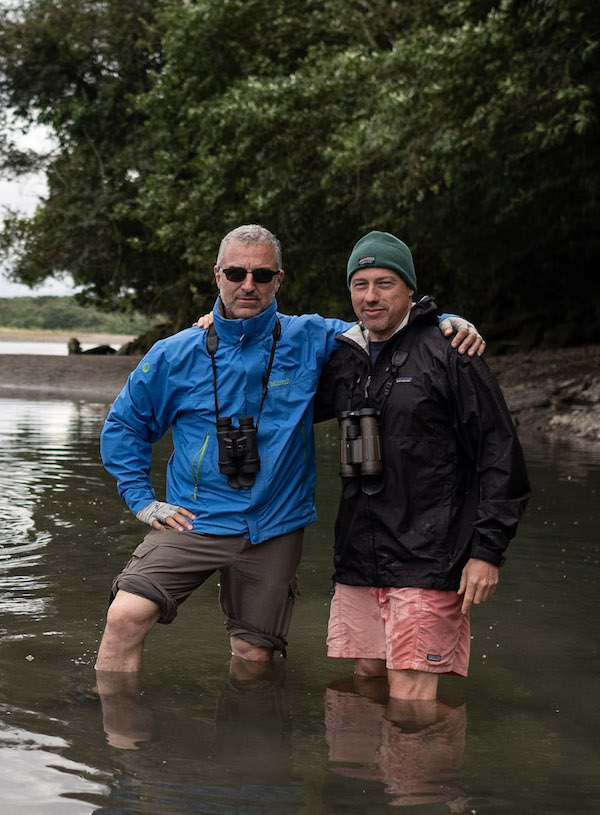
Silman, right, and Catanoso
The official start of the program comes a few days after the group arrives in Peru. Brief stops in Lima on the arid Pacific Coast at sea level, then a flight over the majestic Andes to the ancient Incan capital of Cuzco at 11,000 feet. A long bus ride takes the group to even greater heights. As we cross to the eastern side of the Andes, we are engulfed in a cloud forest at 13,000 feet and enter an entirely new ecosystem — the lush and wet Amazon basin. Silman calls it “the world’s largest tropical wilderness.”

We rise early in the high Amazon to watch what is touted as one of the great sunrises on Earth from 3,000 feet above the clouds. As those clouds dissipate, we are left with a view of unbroken green. So many treetops spreading out far and wide. If you could see national borders, you’d see Bolivia off to the right, Brazil off to the left. What you can’t see is how this dense rainforest is struggling to adapt to warming temperatures.
“There are as many trees in the Amazon as there are stars in the Milky Way,” Silman says.
Traveling down to 5,000 feet, we enter one of the world’s great biodiversity “hot spots.” One out of every nine bird species on Earth is in the jungles we pass through. Thousands of species of trees, many still unnamed, thrive there. We descend farther, closer to the Amazonian lowlands. There we find a dozen species of primates as they scamper through the canopy above our heads: palm-sized pygmy marmosets, emperor tamarins straight out of Dr. Seuss, spider monkeys with long arms swinging gracefully from limb to limb. This remote jungle is a wonderland, nature undisturbed, except by the rising temperatures of climate change.
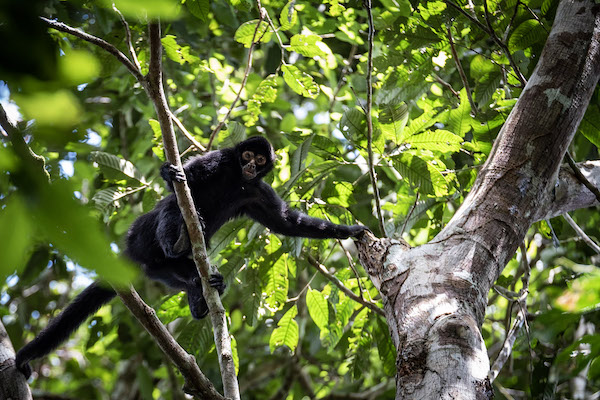
One out of every three species on Earth lives in Amazonia. That includes caiman, tapir, giant otters, spectacled bears and big cats such as puma and jaguar. Smaller creatures include insects and spiders, scorpions and snakes, frogs and toads. Birds and butterflies surround us in stunning variety and colors.
Nature’s blueprint for this jungle is complex, connected and interdependent. Everything, from the tallest tree to the tiniest microbe, has a vital role to play in the forest mechanics at work to keep nature in balance. This vast ecosystem provides services for the species that live in the jungle, as well as for those of us who inhabit the planet.
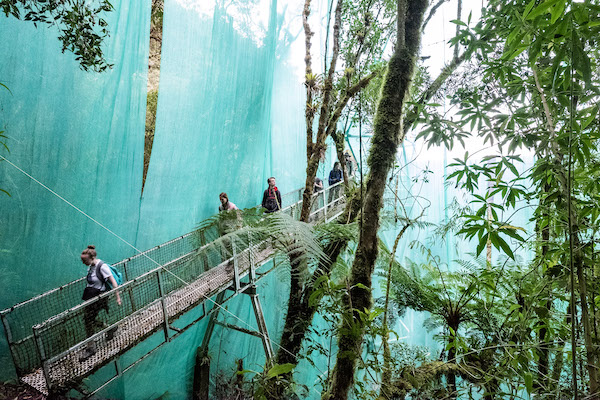
Look closely. Fungi, ants and termites constantly break down fallen limbs, logs, leaves and plants to keep organic matter from piling up and to keep the jungle soil rich and loamy. Birds, primates and reptiles are tied inextricably to plants. Most species move pollen from plant to plant, ensuring the next generation of life; others spread seeds for regeneration after eating fruits and nuts, ensuring the continued renewal of this mighty rainforest.
What’s at stake? When fossil fuels are burned for energy or transportation, the pollution created can only go three places: into the atmosphere, where it increases the greenhouse effect and contributes to global warming; into the oceans, where it acidifies the seas, melts ice caps and damages coral reefs; or into trees and plants, which need carbon dioxide for the process of photosynthesis. This process is especially powerful in tropical forests such as those in the Peruvian Amazon. These trees absorb and store megatons of carbon in their leaves, limbs, trunks, roots and soil, helping cleanse the air and slow the rate of warming. In exchange, they expel oxygen and transpire water droplets that rise into the atmosphere to form clouds — clouds that accumulate to create weather around the world.

When these trees are destroyed by clear cutting, they release their carbon just like cars burning gasoline. Globally, deforestation contributes as much to heat-trapping carbon emissions as the entire transportation sector. Worse still, habitats that are home to the biodiversity required to keep these forests thriving are imperiled. You quickly see a connection between deforestation here and drought elsewhere.
The interdisciplinary design of this program gives students the rare opportunity to experience one of the wildest places on Earth. We start early, right after sunrise at 6 a.m. We end long after dark, more than 12 hours later. The science leads the learning as students consider the natural and cultural significance of the Peruvian Amazon. Program themes consist of daily hikes, bird spotting, tree and plant identifications, forest ecology, geography, field research, scientific readings and lectures. Journalism follows with skills such as interviewing, reporting, writing and photography. Curiosity and urgency animate both courses.
After three weeks of hiking and boating through, and living in, Eden-like jungles, the group comes back down the Río Madre de Dios and encounters a new reality — the heavy hand of humans. Suddenly, we see nature being obliterated by deforestation and the devastating practice of illegal, alluvial gold mining. It’s a jarring juxtaposition. Students gasp at the treeless landscape they witness at close range. Some miners, no older than the students, wave and smile from the riverside. Climate change? Meet a root cause.
Hope emerges in the form of Wake Forest scientists working in Madre de Dios for Centro de Innovación Científica Amazónica, also known as the Center for Amazonian Scientific Innovation or CINCIA.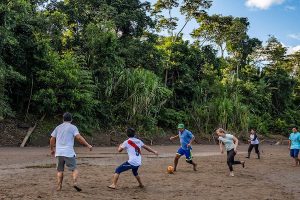
Students go to research facilities and nurseries to interview CINCIA specialists in forestry, biochar production, seed propagation and seedling growth, mercury mitigation, aquatic life and health, and drones for geo-mapping of deforested lands. They visit mining sites and learn that CINCIA scientists work with the miners, offering insights into how to mine with fewer trees felled and without mercury. In return, CINCIA gains access to deforested lands to transform as test plots for reforestation. CINCIA’s success over the past six years offers hope not only to Peru, but to tropical countries worldwide seeking to reforest damaged lands critical to the health of the planet.
By program’s end, students are deeply informed, alarmed and motivated. They’ve witnessed nature untrammeled, nature destroyed, nature being restored. Their final projects communicate in research, stories and photos the arc of their experiences with depth and gravity. And as we leave the Amazon, students embrace a message from Silman they now know the world must appreciate as much as they do:
“Nature just keeps giving. If we let her.”
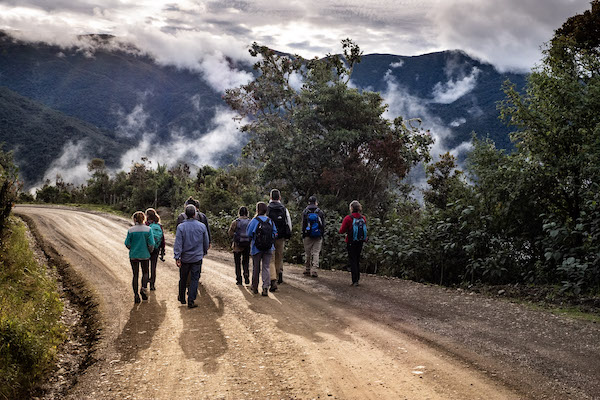
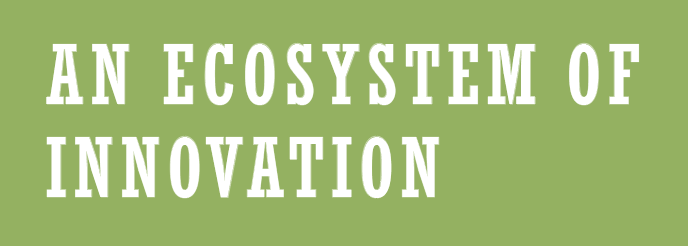
Look to the Center for Energy, Environment and Sustainability as the hub of Wake Forest research and public engagement aiming to create a sustainable future.
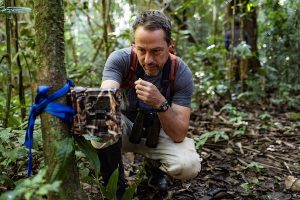
Miles Silman
Founded in 2010, the center’s 130 scholars work across dozens of disciplines on real-world problems, from engineers and computer scientists who are developing technology to understand changes in marine ecosystems to biologists developing solutions on how to reforest degraded areas in the Peruvian Amazon. The scope of the scholars’ work throughout the University’s undergraduate and graduate schools is vast, from renewable energy, environmental law and policy, enterprise, environmental markets, biodiversity and human behavior. CEES members spearheaded the establishment of the graduate programs in sustainability. At the law school, under the direction of Scott Schang, professor of the practice and a CEES board member, students have worked on environmental and sustainability law cases, such as for a nearby school situated on contaminated land. See more at bit.ly/3M9ZNp8
From the start, CEES’ champion has been Miles Silman, biology professor, CEES founding director and the Andrew Sabin Family Foundation Presidential Chair in Conservation Biology. Stan Meiburg (‘75) was named CEES executive director in July. Read the 2016 Q&A with Silman about his visionary work founding the Center for Amazonian Scientific Innovation in Peru’s Madre de Dios river basin, where, he says, “what happens in the Amazon echoes around the world.” See the story at bit.ly/2Gcldnq

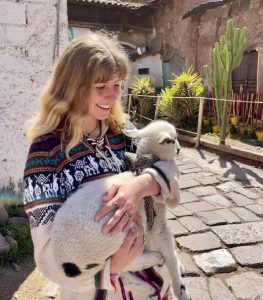
Una Wilson, a junior from Winston-Salem, is a Guy T. Carswell Scholar, a biology major specializing in studies of fungi and a journalism and environmental studies minor. After the study-abroad program ended in June, she remained in Peru for several weeks to research mycorrhizal fungi in recently mined soils of the Amazon rainforest.
I went to Peru as an activist. I was intrigued by the intense geopolitical battle that has enveloped the people and wildlife dwelling in and around the Amazon region. Farmers burn large portions of the rainforest for cattle and produce. Miners excavate iron and gold ore underground, causing deforestation and devastating soil degradation. Such destruction threatens the livelihood of Indigenous groups who have lived within the forest for centuries. Even worse, the fate of the Amazon rests in the hands of a few corrupt politicians whose decisions push our planet increasingly further into the climate crisis. I wanted to understand the complex relationship between these groups and the land they rely upon, each for a distinct region.
I left Peru as a scientist. Living in the dense, untouched tropical forests at the Cocha Cashu Biological Station research center, hundreds of miles from any civilization, I found myself completely captivated by the wilderness. Macaws flew overhead, spider monkeys crashed through the branches of fig trees, chattering as they went, and dense root mats and colorful fungi flourished in the understory. On our class hikes, Dr. (Miles) Silman helped us identify the birds chirping in the surrounding trees and challenged us to learn their calls. At night, we discussed scientific papers written about the exact natural phenomena we had experienced during the day.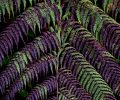
Experiencing the wildness of the Amazon helped me understand the value of nature, purely for its boundless opportunities for discovery. Solely focusing on climate change and politics had erased my sense of wonder for wilderness. If we only focus on how nature is disappearing, we lose sight of the reasons to preserve it.
Justin Catanoso (MALS ’93) is professor of the practice in the journalism program, a board member of the University’s Center for Energy, Environment and Sustainability and a regular correspondent for the environmental news website Mongabay.com.
